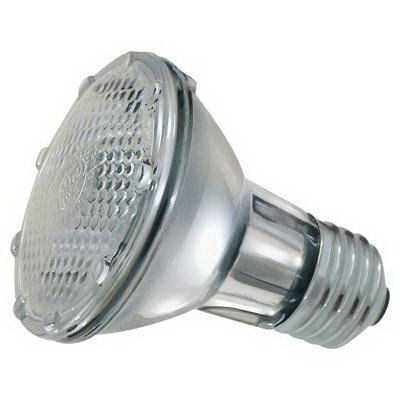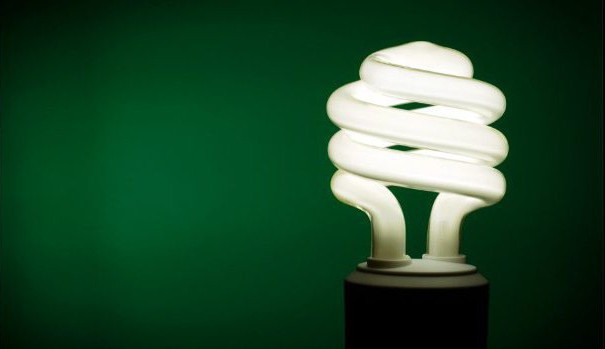Long gone are the days when only incandescent lamps, popularly called "Ilyich bulbs," were used for lighting. Today, in any department of electrical products, in addition to the "classics", you can see a huge number of energy-saving, halogen and LED lamps that differ in power and size, in the shape of flasks and cartridges.
The effectiveness and efficiency of these products are really encouraging, but the service life is still poor. Therefore, the question of why the bulb burns out does not lose relevance.
Lamp selection
In addition to external factors, such as faulty wiring, voltage surges, and so on, that directly affect the lamp life, the technologies by which they are produced play an important role. The fact is that the algorithm of operation of various types of lamps is different, which determines their working life. When selecting lighting fixtures, it is necessary first of all to pay attention to their technical characteristics in order to understand how well and for how long this or that light source will work.
Incandescent lamps
These products are available in the form of sealed glass flasks filled with vacuum or inert gas. A tungsten spiral is placed in the flask, which, glowing under the influence of an electric current, emits light and heat. The level of light output and the life of incandescent lamps depend on the temperature of the incandescent coil.
With increasing temperature, the brightness increases, but because of this, tungsten evaporates faster, forming a mirror coating on the inner surface of the bulb. Because of this, the luminous flux is reduced. Over time, the tungsten spiral becomes thinner and at a certain point melts in the thinnest place. That is why a light bulb burns out. On average, the life of incandescent lamps is 1000 hours.
Halogen lamps
The principle of operation of power supplies of this type is practically no different from the functioning of incandescent lamps. The difference is only in the presence of small additives of halogen (chlorine, iodine, bromine, fluorine) in the filling gas, which prevent clouding of the flask. Tungsten, evaporating from the spiral, moves to the walls of the flask, where the temperature is lower than near the spiral. There, it comes into contact with halogen and, in the form of a tungsten-halogen compound, moves back to the red-hot spiral, where it decomposes. This process helps to restore part of the tungsten, due to which such lamps can last about 4000 hours.

The only reason why bulbs of this type often burn out, and new ones, is the failure to comply with the rules for their installation. The fact is that fingers are strictly not recommended to touch the surface of the flask. Left grease imprint, baking on the glass, provokes the formation of cracks and premature failure of the lamp. Install halogen lamps with a packing film or a dry, clean cloth. If the prints are still left, you must carefully erase them.
Energy-saving (compact fluorescent) lamps
In the bulb of such lamps are tungsten electrodes coated with a mixture of oxides of calcium, barium and strontium. An inert gas with a small amount of mercury vapor is used as a filler. The inner surface of the flask is coated with a phosphor. This special substance converts ultraviolet radiation generated by voltage into ordinary light.

Such lamps are characterized by minimal energy consumption, efficiency, reliability and a long service life of 8000 hours. Before the advent of LED lighting devices, energy-saving ones were very popular among consumers. Although many people have a question about why bulbs in an apartment quickly burn out, if they are designed for such a long service life. And this is due to the fact that these devices do not tolerate frequent on / off. In other words, the harder the owner is trying to save energy and lamp life, the faster it breaks down. Another reason why the energy-saving light bulb burns out is the same fingerprints left by the user when screwing in.
LED lamp
In these lighting fixtures, LEDs are the light sources. Such lamps have neither glass bulbs nor incandescent filaments. They have a number of undeniable advantages that the above options do not have, namely:
- economical energy consumption;
- compact sizes;
- lack of heating effect during operation;
- a huge working resource (25,000-100,000 hours);
- the presence of standard cartridges;
- environmental friendliness (in a design there are no harmful or dangerous components);
- resistance to low temperatures;
- the presence of a radiation spectrum close to natural;
- lack of flicker;
- lack of need for high voltage.
The huge life of such lighting devices is due to the fact that there is no filament in them, therefore, there is nothing to burn out. However, they, unfortunately, are not eternal. So why do LED bulbs burn out? This is explained by the fact that such products are manufactured using the most simplified technology, which involves the use of a simple ballast converter, while a full-fledged electronic adapter can provide long-term operation.
At the time of ignition of the lamp, the ballast converter is not able to cope with a powerful inrush current, passing it to the LEDs. Due to such throws, the crystals and the phosphor covering them are rapidly destroyed. Given that the rated current can exceed the required indicator by 1.5 times, it is not difficult to understand why the LED bulb burned out.
External factors affecting the life of lighting
Of course, the operating rules, quality and working life of each type of lamp are directly related to their service life. However, there are many third-party reasons that affect the duration of the "life" of lighting devices. Among the most common negative external factors can be, for example, power surges, emergency wiring, faulty switches and cartridges, etc. Below we will examine why bulbs in a chandelier often burn out and what are the methods for solving this problem.
Unstable voltage
Unfortunately, the quality of voltage in domestic power grids is very far from ideal. Due to frequent and severe changes, not only bulbs, but also household appliances fail. High voltage is the most common reason why light bulbs in a chandelier burn out. Especially often incandescent lamps suffer from this. There are two ways to protect yourself from this scourge: choose the right lamps or stabilize the voltage.
Most often in stores you can find incandescent lamps designed for voltages of 220-230 V. If there are frequent surges, it is recommended to look for 230-240-volt light sources. Another solution will be the replacement of incandescent lamps with fluorescent devices, which are not affected by high voltage. The ideal solution is to install a suitable voltage regulator model. This device will be able to protect from burnout not only the lamp, but also household appliances.
Low-quality cartridges
If you are wondering why a light bulb burns out in the same lamp, the problem is most likely in the cartridge. If it is ceramic, just clean the contacts. But most often, the cartridges are made of plastic, and not always from high-quality. Such products are designed for lamps whose power does not exceed 40 watts. If you screw in a lamp of greater power, the plastic cartridge will quickly begin to crack, and the contacts will burn. As a result, the lamp will become hotter and eventually burn out.
A damaged plastic cartridge should be replaced, preferably with a ceramic model.
Bad switch
Burnt contacts in the switch can also cause frequent lamp burnout. In this case, it is necessary to disassemble and remove the switch, clean all contacts and ensure their reliable connection. If on the switch there are obvious defects in the form of reflows at the joints of the contacts, it is better to replace it. Instead of a conventional switch, you can install a dimmer that allows you to adjust the brightness of the lighting while protecting the lamps from power surges.
Bad contacts
Poor connection of the chandelier wires, weak contacts on the apartment panel or in the junction box - all this will affect the service life of not only lamps, but also all electrical equipment in the apartment. Periodic revision of all contacts will help to avoid troubles. Particular attention is required to aluminum contacts, since due to the softness of this metal they spontaneously weaken.